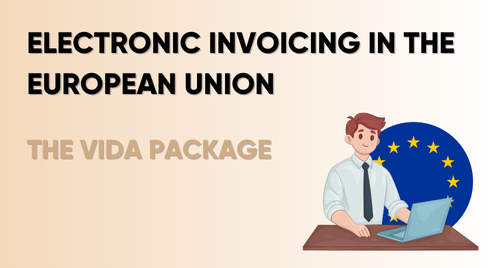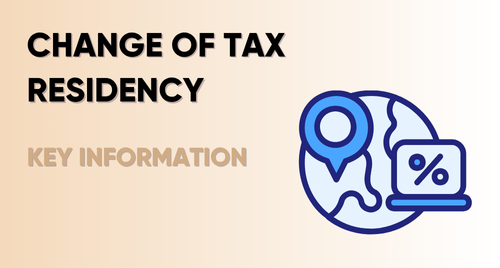.jpg)
Estonian CIT - what do you need to know?
On January 1, 2021, the legislation on lump sum taxation on corporate income
commonly referred to as Estonian CIT came into force. The lump sum is an
alternative taxation system for CIT taxpayers. Its attractiveness and accessibility for
taxpayers has increased with the entry into force of the Polski Ład (en. “The Polish
Deal” is a plan to rebuild the Polish economy after the COVID-19 pandemic).
Estonian CIT - why is it not popular?
Lump sums on corporate income are regulated in Chapter 6b, provisions 28c et seq.
of the Act and the Corporate Income Tax (CIT). The Polish Deal simplified the
aforementioned conditions and Estonian CIT is now available to a larger number of
CIT taxpayers.
What does taxation look like at the Estonian CIT?
The idea behind lump-sum taxation on corporate income is that no CIT is payable
until the company's profit earned during the company's period of Estonian CIT
taxation is distributed - either by paying out that profit (dividends or dividend
advances) to shareholders, or by covering a loss incurred prior to the period of lump-
sum taxation from the profit.
The CIT's absence is obviously a tax saving for taxpayers, which they can, for
example, invest in development.
In addition, it is important to note that if the company decides to make the above-
mentioned profit distribution, the CIT rates are different under Estonian CIT than
under general taxation.
According to Article 28o of the CIT Act, the lump sum is:
● 10% - in the case of a small taxpayer and a taxpayer starting a business;
● 20% of the tax base - in the case of a taxpayer other than the one indicated in
point 1.
Tax credit for shareholders
Unlike a company taxed on CIT under the general rules, partners of a company on
Estonian CIT, can take advantage of an additional relief. It consists in the fact that
they can deduct the CIT paid by the company from the tax due on the distributed
profit (on dividends).
The provision of Article 30a (19) of the PIT Act indicates that the flat tax on income
received by a shareholder from distributions of distributed profits of a company
earned by the company during the period of flat taxation on corporate income, if
derived from the distribution of profits of that period set apart in the company's
equity, shall be reduced by an amount representing:
● 90% of the amount corresponding to the product of the shareholder's
percentage share in the company's profit, calculated as of the date on which
the shareholder acquired the right to payment of distributed profit and the due
lump sum on the companies' income from the distributed profit of that
company from which the income was derived - in the case of distributed profit
income paid from the profits of a company that is a small taxpayer or a start-
up, or
● 70% of the amount corresponding to the product of the shareholder's
percentage share in the company's profit calculated as of the date on which
the shareholder acquired the right to payment of distributed profit and the due
lump sum on the companies' income from the distributed profit of that
company from which the income was derived - in the case of distributed profit
income paid from the profits of a company other than the one indicated above.
In summary, the rates of CIT on Estonian CIT and the aforementioned deduction for
shareholders make the effective taxation actually 20% for a small taxpayer and 25%
for other companies. In contrast, the effective taxation of CIT on a general basis is
26% for a small taxpayer and 34% for other taxpayers.
The conclusion is that Estonian CIT is a much more favorable form of taxation than
general taxation.
Terms and conditions of the Estonian CIT
A taxpayer who wishes to switch to lump-sum taxation must meet the conditions in
Article 28j of the CIT Act. These are:
● Achieving less than half of the revenues of titles other than revenues from:
receivables, interest, warranties and guarantees, copyrights,
disposal/execution of financial instruments, from transactions with related
parties, where this transaction does not produce economic added value or the
value is negligible;
● The taxpayer employs on the basis of an employment contract at least 3
FTEs, who are not shareholders, stockholders or partners of this taxpayer, for
at least 300 days in the tax year, or if the tax year is not a period of
consecutive twelve calendar months - for at least 82% of the days falling in
the tax year, or
● A taxpayer incurs monthly expenses in an amount equal to at least three
times the average monthly salary in the business sector for the payment of
salaries and wages to at least 3 physical persons employed under a contract
other than an employment contract, who are not shareholders, stockholders
or partners of that taxpayer, if the taxpayer is obliged to collect PIT advances
and Social Security contributions in connection with the payment of these
salaries.
● the partners of the company are exclusively physical persons;
● the taxpayer conducts business in the form of a limited liability company, joint-
stock company, simple joint-stock company, limited partnership, limited joint-
stock partnership;
● the taxpayer does not hold, among other things, shares in the capital of
another company;
● the taxpayer does not prepare financial statements in accordance with IAS for
the period of lump-sum taxation;
● the taxpayer does not earn income from business activities conducted in a
special economic zone or specified in a decision on support for new
investments.
Doubts at Estonian CIT
Finally, it is worth pointing out that the Estonian CIT has not only advantages alone,
but also disadvantages. These disadvantages are due to the vagueness and
imprecision of the regulations. First of all, it should be noted that Estonian CIT is
taxed not only on profit distributions in the strict sense - that is, dividend payments or
loss coverage.
Tax must also be paid on so-called hidden profits. The CIT Act in paragraph 3 of
Article 28m indicates that the hidden profits referred to in paragraph 1(2) are
understood to be pecuniary, non pecuniary, chargeable, gratuitous or partially
chargeable benefits made in connection with the right to share in profit, other than
distributed profit, the beneficiary of which, directly or indirectly, is a shareholder,
shareholder or partner or an entity directly or indirectly related to the taxpayer or to
that shareholder, shareholder or partner, in particular:
1. the amount of the loan (credit) granted by the taxpayer to a shareholder,
stockholder or partner, including through funds created from profits, or to an
entity related to the shareholder, stockholder or partner, as well as interest,
commissions, fees and charges on the loan (credit) granted by these entities
to the taxpayer;
2. benefits provided to:
a) a private or family foundation, an entity equivalent to such a foundation, or
a business operated by or for the benefit of the beneficiaries of such a
foundation or such an entity,
b) a trust or other entity or legal relationship of a fiduciary nature;
3. The excess of the market value of a transaction determined in accordance
with Article 11c over the determined price of that transaction;
4. the surplus of the returned amount of the surcharge, contributed to the
company in accordance with separate regulations, over the amount of the
contributed surcharge, whereby if the surcharge was contributed in foreign
currency, the conversion of this amount into zlotys shall be made according to
the average exchange rate of the foreign currency announced by the National
Bank of Poland on the date of the surcharge's return and actual contribution,
respectively;
5. remuneration paid out of profit from the redemption of shares, from the
reduction in the value of shares, from the withdrawal of a shareholder from the
company, from the reduction of a shareholder's equity interest in the
company;
6. the equivalent of the profit allocated to increase the share capital;
7. donations, including gifts and offerings of all kinds;
8. representation expenses;
9. surcharges paid in the event of a merger or division of entities;
10. interest on the capital share paid to the shareholder by the company;
11. profit allocated to replenish the capital share of a partner of the company;
12. monetary and non-monetary benefits paid when a shareholder's capital share
in the company is reduced.
In practice, taxpayers have difficulty determining whether there are hidden profits, in
particular, it is questionable whether invoicing by a partner of the company for certain
services, constitutes a payment of hidden profits.
Another problem is the taxation of non-business expenses (income from non-
business expenses) by Estonian CIT. The act does not define what is meant by this
term. Tax authorities have recently taken the cursory position that this type of expense is 50% of expenses for personal cars used by employees for private purposes, even when the cars are not used by partners (e.g., interpretation ofJanuary 25, 2022, No. 0111-KDIB1-2.4010. 554.2021.2.AK).
In conclusion, Estonian CIT, due to its attractive effective tax rate, is worth
considering. However, one should be prepared for disputes with the tax authorities
over the practical application of the regulations.










